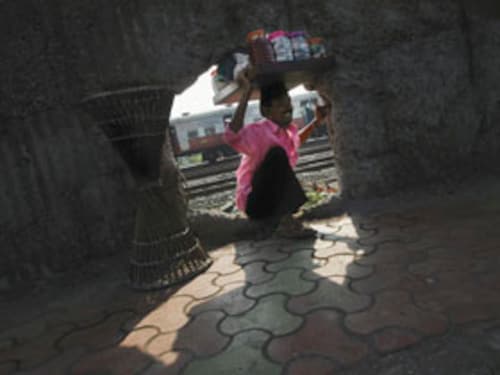The Curse Of Rs.20
But it is also an opportunity, say companies that look at the poor as a market


CK. Ranganathan grokked the bottom of the pyramid a long time ago. But even the wily marketer and founder of personal care products firm CavinKare had only a limited idea of the consuming power of the poorest Indians. The relevant data was hard to come by.
But that has changed now. Three years of painstaking research has helped the government accurately describe the earning and spending patterns of the weaker sections. This is a boon not only to policymakers, but also companies trying to sell goods and services to that layer of people.
The National Commission for Enterprise in the Unorganised Sector (NCEUS) has estimated that 77 percent of India’s population, or 836 million people, lived on an average consumption of less than Rs. 20 per day in 2005. They needed to buy essential items of daily life, but couldn’t afford most brands that traditionally came in bulky and hence pricier packets.
That explains why the Rs. 2 five-biscuits-a-pack Parle G is popular in the remotest villages of the country. Or why CavinKare’s little shampoo sachets beat the stuffing out of multinational marketing machines selling toilet care in moulded plastic. At Rs. 20 a bottle, the shampoo market would perhaps comprise about 250 million people. But at Re. 0.50 per sachet, it would expand to four times. Similar opportunities lurk in almost all items that the poor consume.
It is clear from the NCEUS study that in spite of the fast growth of the past few years, most folks simply have a hand-to-mouth existence. A family of five spends an average of only Rs. 100 per day. Their average per-capita income is less than Rs. 24 per day per person.
Not everyone agrees with the NCEUS data. Pradeep Lokhande, CEO of rural marketing research company Rural Relations, contests the number arguing that the government’s National Rural Employment Guarantee Scheme pays Rs. 80-100 a day. This is the scheme that the government runs in order to counter the seasonal nature of rural employment. “Most other menial jobs fetch similar amounts unless they are in some of the poorest districts of India,’’ he says. So the ability to consume could be more than Rs. 20.
Most workers in India are unemployed or hired by informal enterprises. The commission defines unorganised workers as those “working in unorganised enterprises or households, excluding regular workers with social security benefits, and the workers in the formal sector without any employment/social security benefits provided by the employers.”
Here is another statistic that puts India’s job growth story in perspective. NCEUS estimated that of 86 percent of India’s total work force of 456 million people, a whopping 393 million come under the unorganised category.
And what about employers whose mills and machines are said to be generating thousands of jobs? The 20 richest Indians in India had a net worth of $118 billion in December 2008, according to Forbes estimates. That is the month when asset valuations had hit their nadir, which means at their poorest, the wealth of 20 Indians was equal to the annual salary of 673 million people
First Published: Jun 26, 2009, 09:10
Subscribe Now(This story appears in the Jul 30, 2010 issue of Forbes India. To visit our Archives, Click here.)